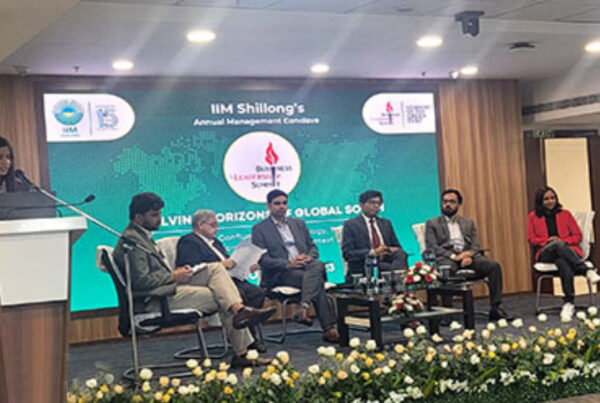Customer is king.
All businesses swear by the mantra today. Ensuring customer delight has assumed a far greater significance now as the paradigm of marketing is changing in the digital era. It is shifting rapidly from being product-centric to information-centric, where the customer is an aware individual, technically-savvy, shrewd and candid about his expectations, in stark contrast to the naïve customers of yesteryears.
As perceptions change and the customer transitions into an ‘asset’ from being just another cog in the wheel, the success of an organization hinges on the experience it offers to this ‘king’.
Needless to say, ensuring a hassle-free, seamless and comprehensive journey to your customers is the key to buying their loyalty. Consumers expect brands to provide a pleasant, wholistic experience rather than just a transactional relationship, comprising fast and efficient services that are compatible across platforms and zero obstacles across touch points.
Moreover, the experience you offer to your customers will play a key role in deciding the longevity of your brand vis-a-vis your competitors’ products/services.
Why does seamless experience count?
Because:
A happy consumer means a loyal customer; retention will lead to acquisition, both translating into higher revenues. It is a reflection of your ability to function efficiently and effectively as an organization. Moreover, it is about offering your customers a wholistic experience across their entire journey. This spans processes even before the transaction begins, during the phase of the transaction and post-completion, or feedback. Organizations that follow this approach, rising above the ‘touchpoints only’ perspective, are able to obtain a 360-degree perspective on experience and based on it develop actionable insights to improve their performance. This is highly relevant today, given that there are multiple touchpoints, several channels of communication, and round-the-clock accessibility. Most important, ensuring seamless customer experience indicates how deep-rooted your strategy is.
So, how do we get there?
Begin with pursuing a customer-centric approach in developing products. This entails understanding your target audience or customers so that you are able to pre-empt their requirements. You can start by collecting information through FAQs centering on expectations, benefits and experience pertaining to a product your organization intends to launch in future, or for any other future objective of yours. This will help in getting a sound understanding on the fundamental requirements of customers, their key needs and perspectives that can then be factored in to develop the product or service offering. An equally important step is to be connected with customers on the ground, especially considering that operations today span countries and regions with varying cultural and other requirements. It is therefore imperative to connect with the customer and gain an intuitive insight on how best to cater to them.
You can buttress your customer-centric approach with these 5 tactics:
Prioritizing customer relationships
Consumers are intelligent and quick to spot which organization values them based on the trust and respect with which they are treated. While this may differ from business to business, some of the ways to show you value them are through:
Clarity in communication, either when launching or upgrading a product, or for any specific consumer-related development
Quick responses to queries/efficient customer support service that reaches out on time to address complaints
Effective contact mechanism
For example, if you are in a business where you deal with requests frequently, you could:
Attend to requests on first come, first served basis;
Or
Categorize requests according to priority and then attend to them.
Adopting multi-channel communication/digitalization
As technology has given virtually every power to consumers, you should go phygital as an organization – i.e., combine physical and digital experiences. Leverage sophisticated algorithms to first understand your customers’ behavioral patterns and different buyer personas.
Facilitate omnichannel interactions. Address their concerns in real time if they contact you via social media, your website, phone, contact form, or your company’s app. Having a strong online presence will help you anticipate their preferences and accommodate demands. Make sure your website or products/services are compatible with mobile phones, given that most customers live by their phones these days.
Make your websites user-friendly by incorporating the latest technologies, and making it convenient for customers to surf and self-help themselves. Having chatbots, for instance, is a great way to address queries immediately.
Set up an effective customer relationship management (CRM) system. This is a great way to collect and access data, and deepen the relationship with your customers. You can know about their past purchases, issues faced, feedback, current search trends. Based on the data thus stored or analyzed, you can draw actionable insights to improve performance in this space.
Most important, collect feedback. Based on that, devise your next steps.
Empowering/motivating every employee to ensure consistency in services
Consistency is essential for a trouble-free experience. Customers will gladly return for high-quality service if you are consistent. Maintaining discipline among your employees will go a long way toward fostering trust and loyalty.
Ensure every member of your team is committed to providing seamless service by pursuing a customer-centric strategy, and making customer experience your mission statement.
Train your employees to attend appropriately to customers. Invest in employee upskilling and employee satisfaction. Only a satisfied employee will give the best results to his employer
Ensuring perpetuity of experience by boosting engagement
Your task does not end with the delivery of a product or service, or with ensuring quality customer experience until you achieve this milestone.
It should be ongoing. This would include regular upgrades of products or services, or technologies to ensure ease of use throughout (so, if you are a gaming company, your user experience will depend on constantly upgrading the latest, sophisticated algorithms to offer quality interactive experience).
Focus on the post-sale phase as much. You can use the response to appreciate your customers, or reward them, besides addressing the concerns. This will ensure retention of interest.
Pursuing personalization – Nothing works like sensitivity does
Psychologically, human beings are wired to respond positively to anything that assuages their sensitivity. Personalization is a must as an approach to leave a lasting impression in the minds of consumers.
Make it a part of your marketing strategy to attract leads. Make small gestures that count, such as offering customized products or installing convenient practices. Have a responsive team or mechanism in place as this will help in affirming the consumers’ belief in you.
Most important, be sensitive. Especially on key days or occasions that may not have the same appeal to all consumers, you can avoid embarrassment/insensitive interactions by not sending out generic emails to all in your list.
Conclusion
Building seamless customer experience is not an easy task. While the steps and processes seem obvious, only some organizations are able to get it right.
Providing seamless experience to your customer actually starts with you. How you develop the framework and are able to think big and beyond just serving at the touchpoints. How you are able to communicate with your customer, train your staff, motivate them to give their best performance consistently, and how you deliver and capture feedback – most of all, how you improvise on the basis of that feedback.
Only once you deliver constantly along these parameters, you will gain the insight to develop new products by pre-empting demand from your customers. Your vision will expand beyond retention and loyalty to acquisition of new customers. Creating a good experience is then just the start of the journey for you. If you are on the same journey to discovery and looking for answers, please look up our Consumer Insights page or connect with Suyog Keluskar at suyogk@avalonglobalresearch.com.




